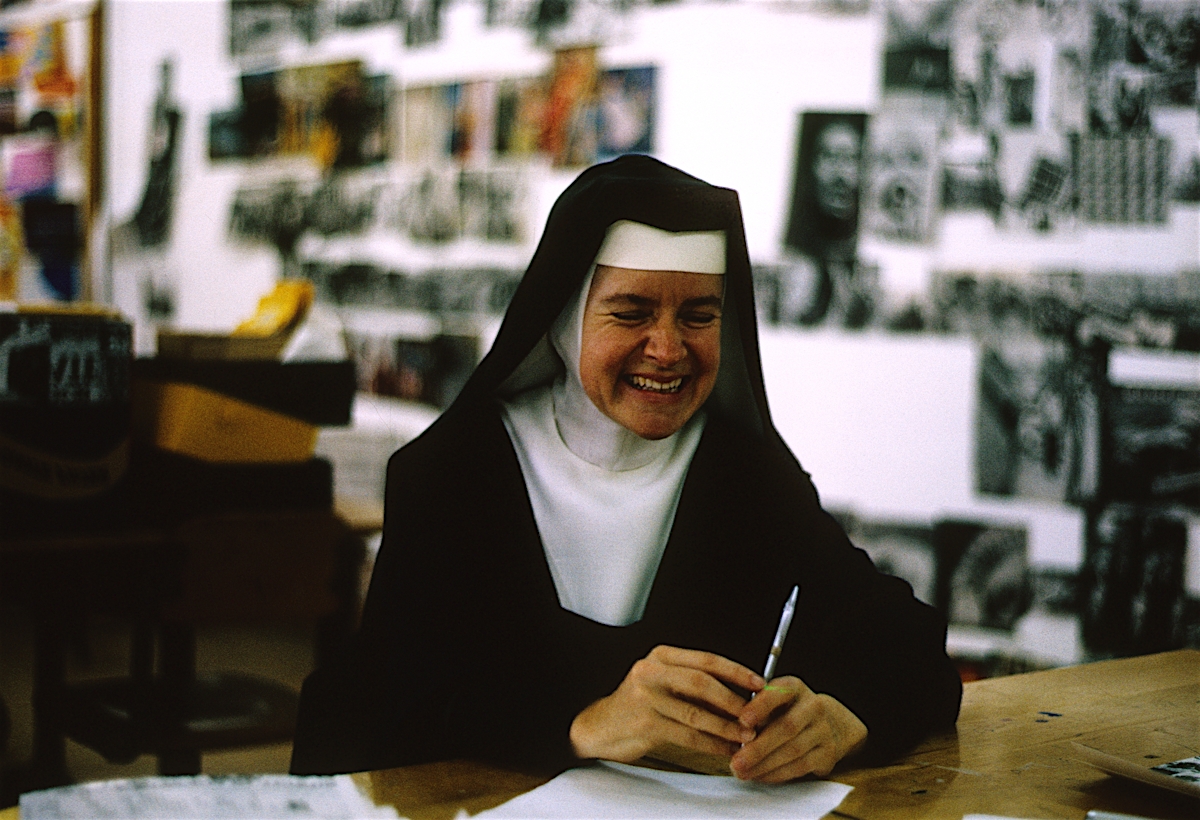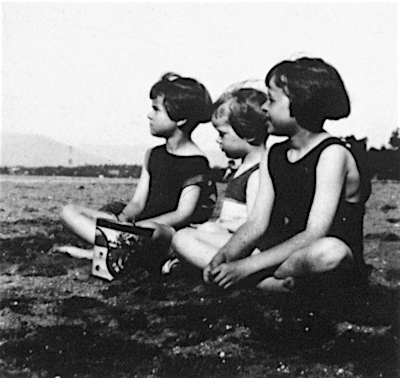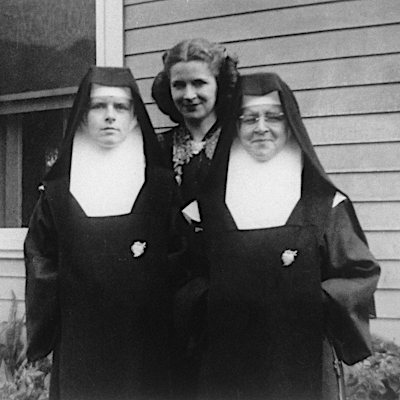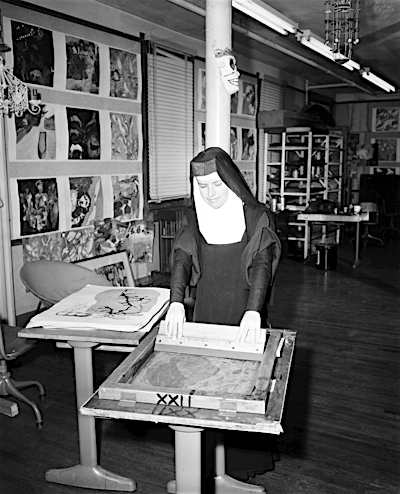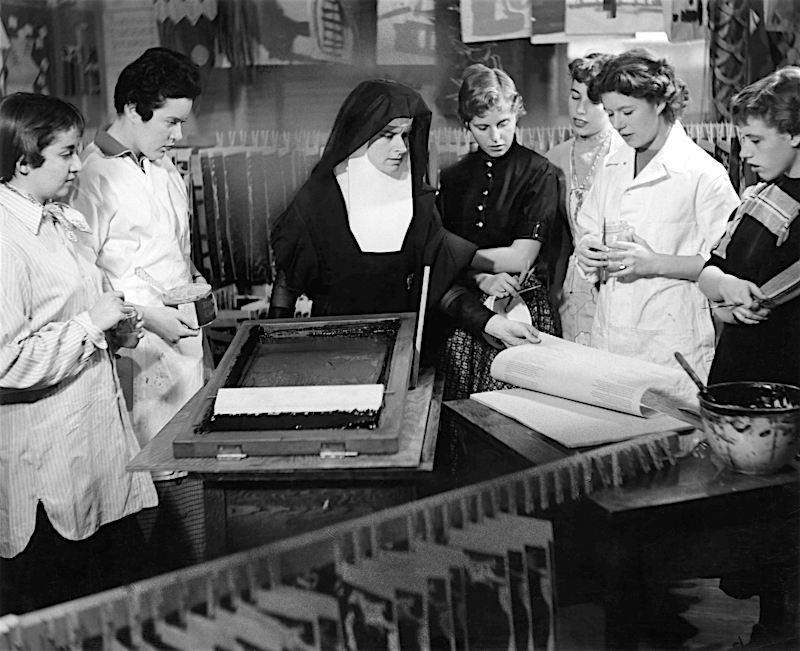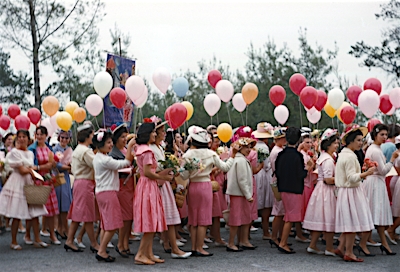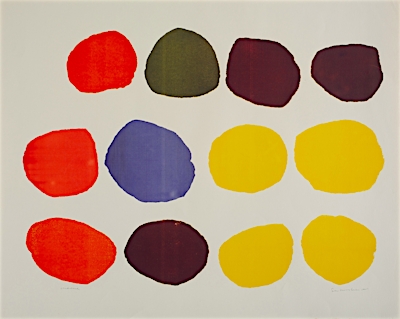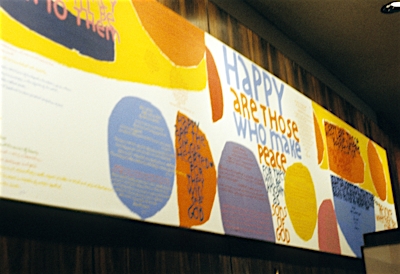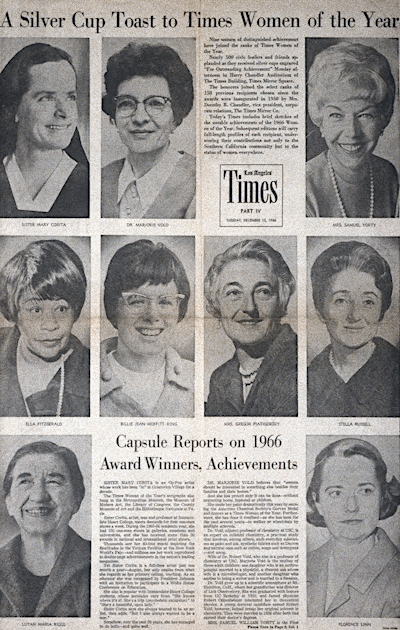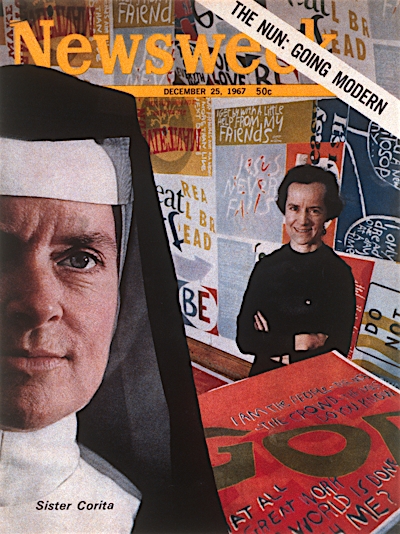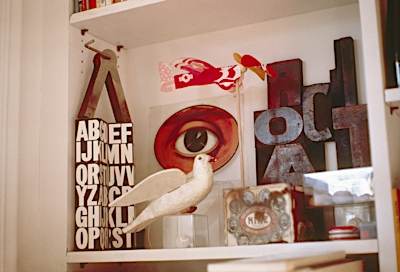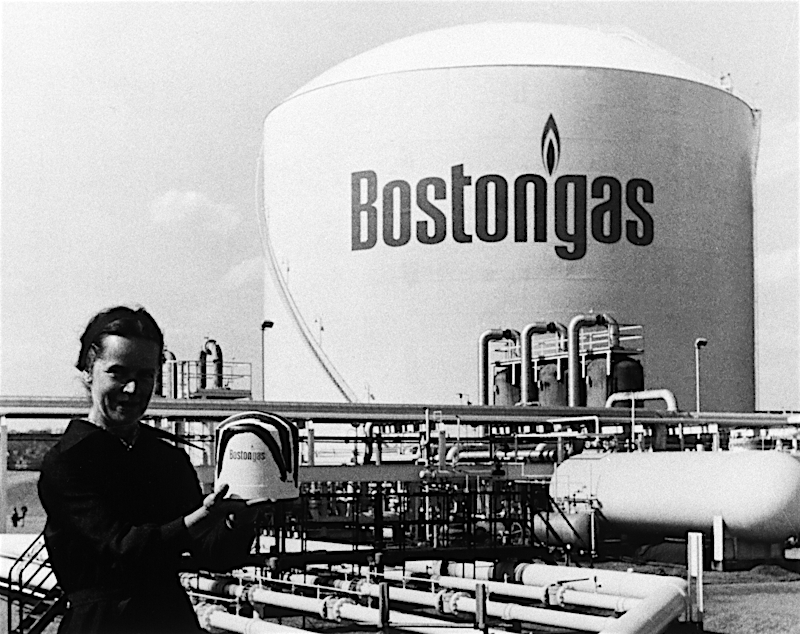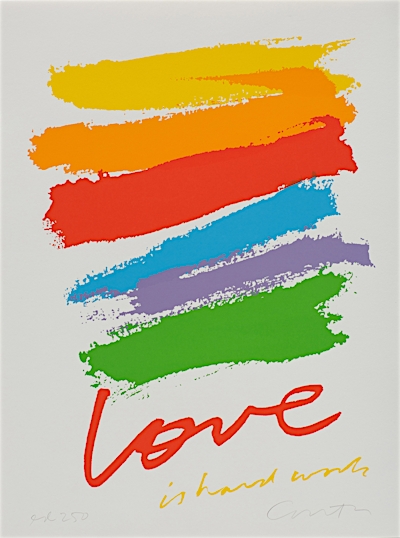Chronology
November 20, 1918
Frances Elizabeth Kent is born in Fort Dodge, Iowa.
1918
Kent family moves to Hollywood, California.
1936
Corita graduates from Catholic Girls High School—now Bishop Conaty-Our Lady of Loretto—and enters the Order of the Immaculate Heart of Mary, takes Sister Mary Corita as her religious name.
1941
Corita finishes her BA at Immaculate Heart College.
1944
Corita is assigned to teach primary school in British Columbia.
1947
Corita is called back to IHC to join the faculty of the Art Department, she begins graduate school at University of Southern California.
1951
Corita graduates from USC, begins screenprinting near the completion of her master’s degree.
1952
Corita wins first prize in both the Los Angeles County print competition and the California State Fair for the lord is with thee.
1952–1959
Corita continues working and teaching at IHC, her reputation as an artist and teacher growing.
1959
Corita and Sister Magdalen Mary, her mentor, go on a trip to Europe and Egypt. Sister Mag acquires many pieces for the Gloria Collection of folk art.
1961
Corita takes over planning for Mary’s Day Celebration.
1962
Corita sees Andy Warhol’s Soup Cans at Ferus Gallery in Los Angeles, produces her first Pop print that summer. Pope John XXIII
convenes Vatican II.
1963
Corita is commissioned to create a banner for the Vatican Pavilion at the 1964 World’s Fair in New York.
1964
Corita becomes chair of the IHC Art Department.
1965
Corita and students Mickey Myers and Paula McGowan organize the Christmas display at IBM in New York.
1966
The Los Angeles Times names Corita one of nine Women of the Year.
1967
Corita is on the cover of the Christmas issue of Newsweek Magazine. The IHMs encounter increasing resistance from the Archdiocese to the changes they are making under the directives of Vatican II. A commission of Corita’s is printed by Harry Hambly at Hambly Studios in Santa Clara. Corita is very impressed with the quality of his work. She sends some of her own designs to him for printing.
1968
Exhausted, Corita takes a sabbatical in Cape Cod, Massachusetts. At the end of it, she decides to seek dispensation from her vows and leaves the IHM Order. Corita begins sending all her prints to Hambly Studios.
1970
Corita gets her own apartment and lives on her own for the first time in Boston. The religious order IHM reforms as an ecumenical lay community, the Immaculate Heart Community.
1971
Corita receives a commission from the Boston Gas Company for one of its gas tanks. Corita’s design becomes the largest copyrighted artwork in the world.
1974
Corita is first diagnosed with cancer.
c. 1977
Corita is diagnosed with cancer a second time.
1979
Corita’s beloved and very close sister Mary Catherine dies of cancer.
1980
A major retrospective of Corita’s work is mounted at the deCordova Museum in Massachusetts.
1983
Corita receives a commission from Physicians for Social Responsibility. Corita calls the “we can create life without war” billboards the most religious thing she’s done.
1985
Corita was asked to design a postage stamp in 1980. After several years in limbo, the design is issued. The unveiling takes place on the Love Boat. Furious, Corita refuses to attend saying that was not the kind of love she meant. She had wanted the stamp to be unveiled at the United Nations. In response she makes the work love is hard work.
1986
Cancer is found again, this time in Corita’s liver. Corita dies from cancer September 18. She leaves her unsold works and copyrights to the Immaculate Heart Community.
1968–c. 1995
Corita Prints, Inc. operates in North Hollywood selling Corita’s prints and merchandise.
c. 1997
The Immaculate Heart Community forms the Corita Art Center to honor Corita’s legacy.
Since 1997
The Corita Art Center has facilitated hundreds of exhibitions of Corita’s work, overseen her images rights, sold her prints, and developed educational programs based on her methods and work.
